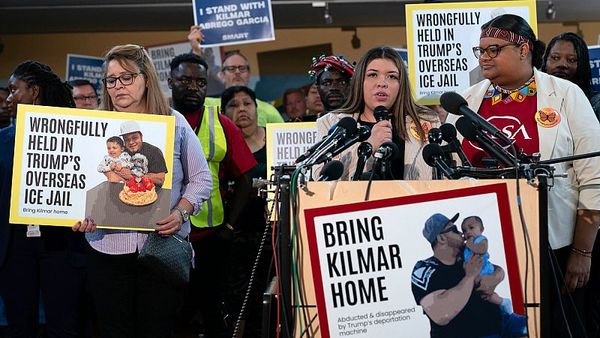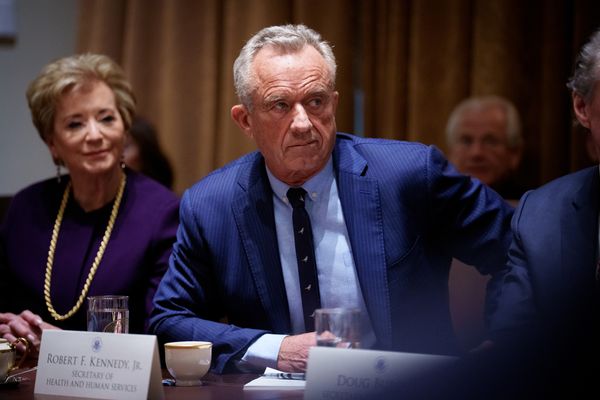
In February 2014, Catherine Ashton flew to Kyiv to hold talks with Ukraine’s embattled president, Viktor Yanukovych. For four years, she had been the European Union’s top envoy. As its first ever high representative for foreign affairs and security, Ashton was used to dealing with crises. Her in-tray included Iran’s nuclear programme; a rumbling dispute between Serbia and Kosovo; and natural disasters around the world, from an earthquake in Haiti to the tsunami in Japan.
This one was precipitated by Yanukovych’s decision to pull out abruptly from an association agreement with the EU. It prompted thousands of protesters to set up camp in the Maidan – Independence Square – in the centre of Kyiv. They spent weeks demonstrating in the cold. Lurking in the background was a spectre: Russia. Or, more accurately, Vladimir Putin, a chilly and “unsmiling” leader with a “deep sense of grievance”. Over the years she got to know him well.
Ashton found Yanukovych in an uncompromising mood. He refused to accept responsibility for the situation on the streets, she writes, and instead “preferred to drone on” about how anarchists wanted to bring him down. Days later, he fled to Russia after his security forces shot dead more than 100 civilians. The pro-European rebels had won. For a moment, it seemed anything was possible and that Ukraine was destined to have a brighter, freer future.
In Ashton’s memoir of her time as a diplomat, And Then What?, she captures the moment vividly. “In Kyiv I was aware of a particular atmosphere that I had experienced before in Egypt, Tunisia and Libya. It was as if the wind had changed direction and you had to brace yourself against it as it whipped your breath away. A sense of excitement, mixed with fear and apprehension… Revolution, freedom, chaos – I could almost taste it.”
Putin, of course, had other ideas. He sent special forces to grab Crimea and kickstarted a bitter war in the east of the country. In February 2022, he launched a full-scale invasion of Ukraine. It is Europe’s biggest conflict since 1945. The west’s collective failure to confront Russia sooner, including during Ashton’s five-year tenure as EU foreign policy chief, was a strategic mistake – arguably the biggest in what is proving to be a tumultuous and darkly twisting century.
Still, there is much to recommend Ashton’s approach to tackling global problems. A Labour peer and former leader of the House of Lords, she got the job after Peter Mandelson came back from Brussels a year early. Gordon Brown sent her to replace Mandelson as trade commissioner. In 2009, she was promoted to HRVP (High Representative/Vice President), as it was dubbed. She had little experience of international affairs. At home, her profile was invisible.
The assumption was that she would be hopeless. In fact, she proved to be the consummate diplomat: quietly effective, focused on detail and often “the only woman” in the group picture, as she puts it. She was interested in getting things done, rather than grandstanding. And painfully aware that there were “no perfect solutions” to complex issues. These included Libya, where in 2011 France, the US and UK intervened to topple Muammar Gaddafi in the wake of the Arab spring.

Ashton makes the case for what she calls “deep democracy”. In her visits to refugee camps and to failing states such as Haiti she discovers that luckless citizens “wanted what we have”. That is, an independent press, proper courts and free elections, as well as a flourishing civil society. It is a modest manifesto. And yet, in an age when Putin is seeking to turn the clock back with a blatant neo-imperial land-grab, it is a radical one as well.
Her insider account is an enjoyable read. It offers a colourful peek into the world of summits and high-level negotiations. She played a key role in two diplomatic successes: an accord between Belgrade and Pristina over the functioning of northern Kosovo; and a EU-US-led deal whereby Iran abandoned its illicit nuclear programme in exchange for sanctions relief. These were hard-won victories, akin, she suggests, to assembling a fiendish “jigsaw puzzle”.
During that momentous autumn of 2013 the Obama administration held its own secret bilateral talks with Tehran. Ashton gives pen portraits of the lead US negotiators: the “gently persuasive” Bill Burns and the “sharp, forensic” Jake Sullivan, now CIA director and national security advisor respectively in Joe Biden’s team. Russia’s foreign minister, Sergei Lavrov, gives her a doodle. She describes Lavrov as “mischievous by nature and dangerous by profession”.
Inevitably, diplomacy involves a lot of hanging around. While waiting on an agreement, Ashton’s aide James spends the time playing “Geneva skittles”. That involves lobbing small Swiss chocolates at empty plastic water bottles placed at the far end of a cavernous conference room. She spends much of her life on planes. Happily, Ashton is immune to jet lag. By the time a deal is reached, she had devoted more time to Tehran “than to my family”, she writes. She is brave, too: flying to Mogadishu to resolve the Somali pirate crisis.
The most poignant episode in her book concerns Mohamed Morsi, the late Muslim Brotherhood leader who in 2012 won the election to become’s Egypt president. A year later the army arrested him. Ashton was taken by helicopter and battered Toyota Corolla to confirm he was alive. She found a forlorn figure, dressed in a grey tracksuit and imprisoned in a shabby workshop. His first words: “I don’t know where I am. I think I am near Alexandria because I can smell the sea.”
Ashton acknowledges the EU – a motley club of 28 nations at the time – made mistakes. Most of her successes unravelled. Egypt reverted to military dictatorship; Libya descended into civil war; and Iran resumed its nuclear activities after President Donald Trump kiboshed Obama’s deal, co-guaranteed by China and Russia. Serbia and Kosovo are once more at loggerheads; the deep-seated issues Ashton tried to fix came back, like so much bad history. Ukraine is a rolling tragedy, the scene of Kremlin mass murder and rapacity.
Nonetheless, it’s clear our politics would have turned out better if we had had more Cathy Ashtons and fewer Boris Johnsons, more constructive collaboration and less alpha male showboating. That she never aspired to a cabinet job is to her credit. The inward-looking UK press ignored her achievements and showed scant interest in European questions overall. Her memoir ends on a melancholy note. She does not discuss Brexit but points out that no other British person will lead European foreign policy, at a crucial junction for the planet. She is, alas, the first and last.
Luke Harding’s latest book, Invasion: Russia’s Bloody War and Ukraine’s Fight for Survival, is published by Guardian Faber
And Then What? Stories of 21st-Century Diplomacy by Catherine Ashton is published by Elliott & Thompson (£20). To support the Guardian and Observer order your copy at guardianbookshop.com. Delivery charges may apply







